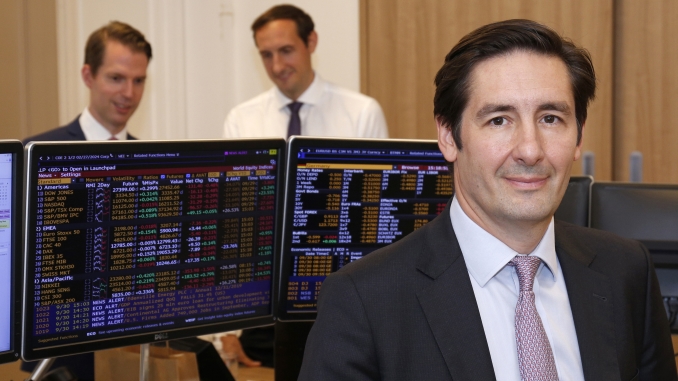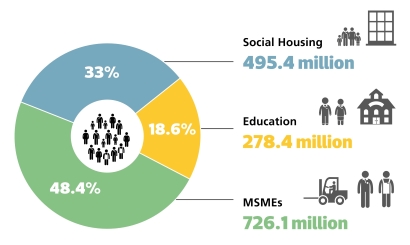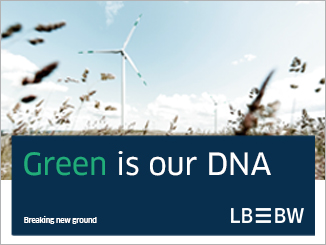In response to the pandemic, Council of Europe Development Bank (CEB) has doubled its Social Inclusion Bond outstandings and added the health segment to its framework, while fast-tracking Covid-19-related support. Arturo Seco Presencio, deputy CFO, head of funding, treasury and ALM, CEB, discussed its rapid reaction and social bond trends with Sustainabonds’ Neil Day.

You can also download a pdf of the interview here.
Neil Day, Sustainabonds: What is CEB’s role in the response to the Covid-19 pandemic?
Arturo Seco Presencio, CEB (pictured): The pandemic is an unprecedented global health emergency. But on top of the health crisis with its tragic human toll, it has also had a major social and economic impact across CEB member states, which is something we have taken into consideration from the very beginning. Some countries are still facing the difficulties of the past decade of austerity, so we were very diligent about doing what we could to mitigate the impact of the pandemic on society.
The CEB is committed to providing timely, flexible and targeted financing to member states and we have been in constant dialogue with those that have been severely impacted by the pandemic, identifying specific needs and approving projects that respond to the Covid pandemic. We are partially financing extraordinary expenditures designed to help healthcare systems cope with the pandemic, as well as broader civil protection measures. On the health side, that can include provision of medical services to Covid-19 affected persons, supporting institutions and medical staff in coping with the influx of patients, or expenses for services provided in residential and social services centres.
But as I said, the coronavirus pandemic is also having a very important impact on the social and economic side, particularly on employment. From the start of the crisis, we saw that micro, small and medium-sized enterprises (MSMEs) would be in a position of need, and that we needed to make sure we could help protect this sector from potentially massive job losses. The CEB is therefore focusing not only on projects that bolster healthcare, but also those that are preserving jobs. We are engaging with the different governments of the member states and with national promotional banks so that they can continue to support these MSMEs and municipal companies, helping to preserve jobs and support ongoing municipal investment.
So to sum up, we have seen our role as firstly tackling the impact of the health crisis to mitigate its immediate consequences, but also supporting the road to recovery in the medium to longer term by addressing the social crisis, which has unemployment at its centre.
Day, Sustainabonds: How does your role in the crisis compare with other European institutions who are involved in sustainable bond issuance?
Seco Presencio, CEB: We have strictly followed our mandate, which is an exclusively social one, as reflected in a strong track record of promoting social investments in Europe. We have always provided quick responses to emergency situations — helping member states counter the threats of the global financial crisis, or other migrant and refugee flows, for example. And again, in this pandemic, our first task is to support the populations of member states. In this regard, it is worth bearing in mind that we are not a purely EU institution; the Council of Europe Development Bank member states are a larger group of 42 rather than 27 countries.
Because we wanted to make an impact more rapidly than usual, we created a fast-track procedure, which is probably the most notable feature of our response to the crisis. The usual process of approving projects internally can take some time, but with the fast-track procedure that we implemented, we can approve and disburse loans rapidly. This has enabled us to meet the needs of member states in a prompt and efficient manner so that they can have greater certainty in their planning.
The importance of the fast-track procedure is highlighted by the volumes that we have been able to approve. By 17 April, quite soon after the pandemic’s initial peak, we had approved several loans totalling €1.7bn and then by 12 May another €1.3bn related to Covid, so the fast-track procedure allowed us to approve €3bn of projects related to the pandemic — bearing in mind that last year our total loan disbursements were €3bn, this is quite exceptional in terms of volume. So we have been able to be fast, reactive, and approve a significant volume of Covid-related projects at the early stage of the pandemic.
Day, Sustainabonds: To what extent have CEB’s funding volumes been affected by its role in the response to the pandemic?
Seco Presencio, CEB: We work under a borrowing authorisation for the year — which is a ceiling, not a target — and for this year it was €4.5bn. In regular times, we would probably have issued less than this. Given the fact that we have approved extra loans, we will go up to the ceiling of €4.5bn in 2020. We now have a borrowing authorisation of €5.5bn for 2021, which is a significant increase on the €4.5bn. And as the loans will be disbursed in tranches, the extra lending will also have an impact on the borrowing authorisation in coming years.

When we have issued our Social Inclusion Bonds previously, we have had to carefully select the projects that are most suitable for them. Now, in light of the Covid-19 situation, we have more eligible projects in our loan portfolio. That has contributed to CEB raising much more in Social Inclusion Bonds this year than in previous years. Until 2020, we had been issuing €500m benchmark transactions in euros in late March/early April, having given a commitment to the market to issue at least one such transaction per year. This year, because of the increase in eligible loans, our issuance volume has risen markedly.
In April, we issued a first Social Inclusion Bond of €1bn with a seven year maturity. The maturity is the same as on the three previous benchmarks because issuing in the same seven year maturity allows us to build a curve in euros. But instead of doing €500m, as previously, we issued €1bn. After that, having seen the increase in loans related to Covid-19, we decided to do a second transaction, a $500m three year in the US dollar market in June. So having previously raised €1.5bn through the three €500m transactions, we have almost doubled our Social Inclusion Bonds outstanding this year.
Day, Sustainabonds: Will your Social Inclusion Bond issuance remain at an elevated level?
Seco Presencio, CEB: We are maintaining our commitment to the market of issuing a Social Inclusion Bond every year to build the euro curve of CEB. While we cannot commit to raising as much as the almost €1.5bn of this year, in the next couple of years we expect to issue more than our previous €500m per year. This takes into account how the tranching of our loans, as mentioned earlier, will affect issuance capacity in 2021-2022.
Day, Sustainabonds: How were the two Social Inclusion Bonds you launched this year received?
Seco Presencio, CEB: Given the challenging circumstances in which the first transaction was launched, the investors’ response was really overwhelming. We updated our framework to add healthcare to the use of proceeds, there was a lot of volatility in the primary market, and everyone was concerned about how to execute transactions whilst minimising operational risk when teleworking. But to our satisfaction, we saw orders in excess of €4.5bn, which enabled us to upsize what had originally been a €500m transaction to €1bn.
It was therefore a real success story in terms of the good cause behind it and the wholehearted commitment of investors to our name and our bonds.
We then saw our loan book growing and the amount of eligible loans increasing, so we thought, why not try to issue some more Social Inclusion Bonds? So we decided to go for a second one for the year. We then had a discussion internally about what we should do, because for some time we had wanted to do something different. It would have been redundant to do another euro, so we decided to test investor appetite for our name in social bond format in the US dollar market, proceeding with the $500m three year trade. Again, it was very well received by investors — we had central bank participation of 77% in the book, and US placement of around 50%.
So with these two transactions, we have not only doubled the volume of our outstanding Social Inclusion Bonds, but also entered US dollars, a traditional market for the CEB in regular benchmarks, also now under social bond format. This was very important for us since we are the first European supranational to have entered the US dollar social bond market in benchmark size, reflecting our well diversified investor base.
Day, Sustainabonds: Why did you decide that it was appropriate to include Covid-19-related activity within your existing Social Inclusion Bond framework? And how straightforward or not was that process?
Seco Presencio, CEB: As an institution, we have this strong social focus and we have always been among the pioneering institutions in the social bond market. This longstanding experience helped us cope with changing our existing Social Inclusion Bond framework to include the health sector.
The Social Bond Principles guidance ICMA released on including activities related to Covid-19 in social bonds were also very helpful. We have been involved with the ICMA Social Bond Working Group since its inception and have always fostered the Social Bond Principles. So when we were considering adding health to our use of proceeds it made sense to be coherent with this approach and take into account their recommendations. So we put in the necessary effort to update the framework and our external opinion provider was also on board with the change. Ultimately we were able to include health as the fourth sector in our framework, and to conclude this process in record time.
Day, Sustainabonds: Why did you choose the moniker “Social Inclusion Bonds”?
Seco Presencio, CEB: One can argue that all of CEB’s lending is social and therefore eligible for social bonds. The institution is involved in some 10 sectors and these include activities related to cultural heritage and natural catastrophes, for example. But when we began work on social bonds we wanted to focus on those sectors that most reflect social inclusion, in the sense of fostering and improving access to the resources that allow citizens to feel at ease within society. We therefore chose the three sectors most identifiable with this idea of social inclusion, relating to job creation and retention, education and social housing.
Firstly, micro, small and medium-sized enterprises, because of the local impact of those organisations and their ability to help preserve and create jobs. This is one of the major issues facing Europe, especially southern European countries where unemployment rates are high, and we felt this was one of the best ways to include the population into the economy. Secondly, education, because, again, it’s through education that people can enter into the economy, get a job, and at the end of the day be involved in society. And thirdly, social housing.
Day, Sustainabonds: How is the inclusion of health affecting the breakdown of the use of proceeds?
Seco Presencio, CEB: Of the loans that had previously been assigned to the €1.5bn net proceeds of the Social Inclusion Bonds issued from 2017 to 2019, 48% was MSMEs, 19% was education, and 33% was social housing. Taking into account the new projects that will be associated with this year’s issuance, integrating the health sector, this distribution will change, with health and MSMEs being at the centre of Covid-19 disbursements.
Proceeds allocation for the three bonds issued between 2017-2019 in euros disbursed

Source: CEB
Day, Sustainabonds: The broad response to the pandemic by national and international authorities as well as private entities has seen an upswell in interest in social bond issuance. What is your take on this, and will it persist as we hopefully emerge from the pandemic?
Seco Presencio, CEB: Yes, I think that we will have more social bonds. As I mentioned, we were one of the pioneer issuers in the social bond market and, being involved in different initiatives, especially with ICMA, we have always supported the market in order to have more issuers of social bonds. The Social Bond Principles are comprehensive and good for the market, not only for issuers, but also for investors, who have a framework that importantly provides transparency and comparability.
In green bonds, we saw a widespread political will that aided its rapid rise, and I think that we are now seeing some of this same will on social matters. This has been prompted by the Covid-19 crisis, which has helped raise wider public awareness of social issues — that, for me, is quite clear.
We have already seen many issuers create social frameworks this year, in light of growing needs in the social space, and we could see this trend increase further in the coming years. Some issuers have issued bonds specifically related to Covid-19, and we could see some of them becoming more regular participants in the social bond market. Social bond issuance this year up to mid-September was already €44bn, more than double the €17bn of all of last year. This growth may continue and hopefully will result in a market where different types of investors have the necessary tools for their decision-making process.
To encourage investors to participate, they will need to see regular issuance in size. That is why we have communicated our commitment to creating a curve. Investors like to see not just a one-shot issue, but regular issuance, where specific issuers build a curve. The market has not yet developed to this extent, but it will come, as different issuers increase their involvement in social bonds, and that will incentivise investor participation.
Day, Sustainabonds: Should a social taxonomy accompany the EU taxonomy focused on green?
Seco Presencio, CEB: I don’t know what shape it will take, but something needs to be considered, because sustainable issuance is not only green issuance. If we take the ICMA principles as an example, at the beginning we only had the Green Bond Principles and some market participants felt the need for something on social, hence the Social Bond Principles. Different institutions have different mandates, and in our case, with the clearly social mandate we have, there is a preference for social bond issuance, however important green is to us. The name and principles of the market need to be aligned with the purpose of the institution, and the Social Bond Principles enabled us to be coherent in our bond issuance with our mandate of social cohesion.
In that sense, something should be contemplated in terms of taxonomy. It could be a specific taxonomy for social issuance, an extension of the existing green taxonomy in order to integrate social aspects, or an evolution towards a coexistence of both green and social under a larger umbrella. But what is clear to me is that social bond issuance and investment need to be taken into account in any taxonomy.
Another parallel is the lack of a specific social bond index. You have green bond indices, and our Social Inclusion Bonds are listed on the Luxembourg Green Exchange. Nevertheless, some investors are rightly asking if there is, or soon will be, a social bond index. They are considering dedicated social bond portfolios and in that respect an independent index would be helpful.
Day, Sustainabonds: In light of talk of a “green recovery” and the European Green Deal, how could CEB further incorporate sustainability beyond its social mandate?
Seco Presencio, CEB: Although we are identified with the social bond market as an issuer, we do very much take green into account. The bank itself takes a lot of care on the green as well as social fronts, as demonstrated in our corporate social responsibility management and report. This relates to a wide range of activities and practices in the institution. And when we discuss social cohesion, it is within the perspective of sustainable development, with fostering environmentally sustainable development going hand in hand with our social mission.
It is important to note that environmental sustainability is a key part of our development plan for the period 2020 to 2022. Environmental sustainability has always been part of our strategy, but in the latest three-year plan the bank has committed to specific points related to environmental sustainability.
Firstly, to integrate climate action components into all the project proposals that we see, such as their potential contribution to greenhouse gas emissions or opportunities for improving climate change resilience. Secondly, we have engaged in aligning with the Paris Agreement during the project screening process. Before approving any project, we will make sure that it is aligned with the climate agreement. And the third engagement point is that the bank will continue to implement its stringent environmental and social safeguards policy, to ensure that all environmental aspects are taken into account not only for loans, but for all the activities of the bank.
Sustainabonds conducts all research and writing independently to maintain the full editorial integrity of the publication.
As a supporter of Sustainabonds, LBBW is facilitating a series of interviews with leading players in ESG and the green, social and sustainability bond markets.
Arturo Seco Presencio photo: copyright Sylvie Dupic




